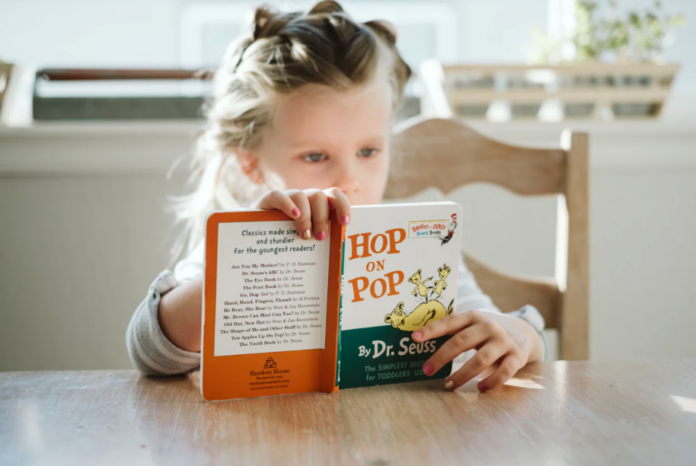Delving into the intricate ways that children’s media sparks fond memories and acts as a healing agent
By HENRY ROSENBACH — science@theaggie.org
During an argument about imagination, a close friend once shouted, “But I’m not creative!” The argument continued until we stumbled upon a collection of essays from the Mozambican author Mia Couto. In one of them, he writes about how the former Prime Minister of Vietnam, Ho Chi Minh, could write delicate and sensitive poetry while locked in a prison. The response given by the Vietnamese leader was, “I undervalued the walls.” The importance of imagination in human development cannot be overstated.
Tamar Kushnir, a professor and researcher at Duke University, has researched the role imagination plays in brain development. It is a crucial aspect of creativity, problem-solving and critical thinking. Imagination allows us to explore new ideas, envision alternative realities and find innovative solutions to complex problems. When we imagine things, our brains create new neural pathways, which can lead to increased cognitive abilities and improved memory retention. This is particularly important during childhood, when the brain rapidly develops and learns new skills.
Moreover, imagination can give us a sense of purpose and direction, helping us find meaning in our lives. By imagining a better future for ourselves and society, we can set goals and work towards them. This can be especially important when forming moral and societal values in a growing child.
Returning to the enigma of Ho Chi Minh, how do our brains manage to unearth those tiny thoughts that make our souls feel at home? Kushnir’s research provides some fascinating insights. It turns out that our brains are like master weavers, constantly intertwining different ideas and experiences. Imagination is the secret ingredient that unlocks this weaving process. By blending diverse thoughts and experiences in novel ways, we can create something extraordinary and meaningful.
Still, as society has progressed, we have embraced a harsh reality as the ruler of all our ideas, plans and dreams. However, if you take a trip back to an elementary school playground, you will likely witness a portal between the real and imaginary worlds children create. During long playtime sessions, kids conjure up fantastic worlds, mythologies and stories that can last for hours, if not days. As we grow older, we tend to lose touch with the purity of our imagination, often undervaluing the walls and limitations we create for ourselves. In the name of “progress,” we discourage children’s ability to build new universes, neglecting the importance of imagination in our lives.
Nevertheless, we still hold on to the ones that make us feel like everything is possible – cherishing the inner child within us. Adults have shown a deep appreciation for children-targeted media in recent years, more so than the kids themselves. Abby Ohlheiser from the Washington Post wrote a report in Feb. 2023 on how the cartoon “Bluey” has a significant adult fandom. The show, which premiered in 2018, features a family of anthropomorphic dogs and their daily adventures. Despite its target audience being young children, the show has struck a chord with adults worldwide.
The emotional impact of children’s media on adults is not new. Many of us have witnessed parents shedding tears at the end of films like “Toy Story 3” or “Inside Out.” Frances Dolan, a distinguished English professor at UC Davis who is widely recognized for her research in children’s literature, explained the distinctiveness of our relationship with children’s media compared to other forms of literature.
“When we study African American, Latinx or Native American literature, we expect the stories to be written by members of such communities,” Dolan said. “However, when discussing children’s literature, we’re not exploring child authors but rather the ‘hidden adults’ who write it.”
Dolan also highlighted the security aspect in children’s literature.
“People love stories that make them feel seen,” Dolan said. “We are all inadequate, and children’s literature usually provides a refuge for our insecurities. I have also observed an incredible increase in diversity in children’s books — stories highlighting kids with disabilities, anxiety and different identities. Books like this didn’t exist some decades ago, and it is so important that they are around now.”
Digressing back to imagination and brain development, Dolan emphasized how children’s media can serve as a nostalgic element that can protect or heal our inner children. When we look at picture books or illustrated stories, different parts of our brains are activated, most significantly when healing past traumas. Children’s literature can help us re-invent and re-signify pivotal events in our lives with a broader sense of protection. Dolan explained that through their vivid imagination triggers, children’s stories can do more than review our childhood.
“[They serve] as a tool to find what should have been there,” Dolan said.
Imagination takes an editing role in the weaving process of memory and cures some of our deepest wounds. Dolan expressed how she always observed students paying close attention to picture books during her lectures.
“There is something magical about the three-way relationship between reader, listener and book — students appear to have a sense of protection and curiosity for them,” Dolan said.
While usually undervalued, children’s literature has magical properties beyond childhood itself. It allows us to search for meaningful wounds in the past and present. Our favorite books as children usually activate a mechanism in our brains to supply needs that might have been neglected. Considering such a healing effect, Dolan left one last important message: “Never stop reading children’s literature […] it will make a bigger difference than you can imagine.”
Written by: Henry Rosenbach — science@theaggie.org





